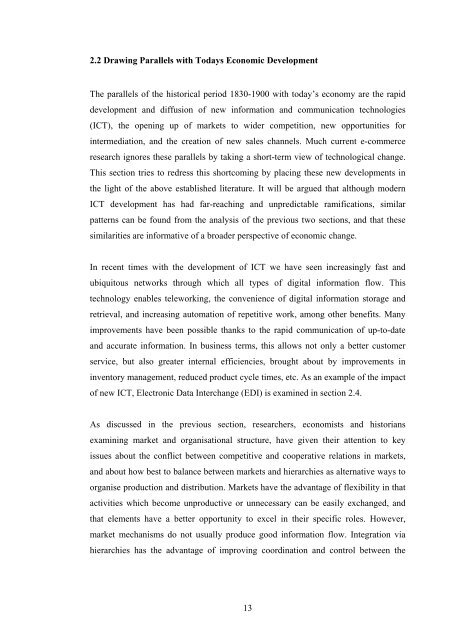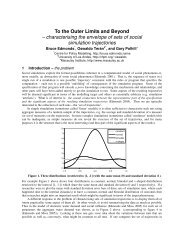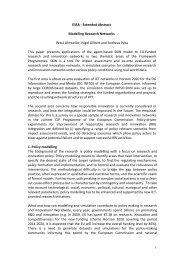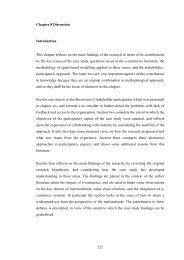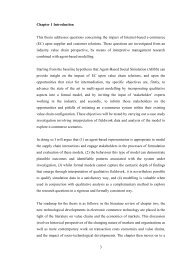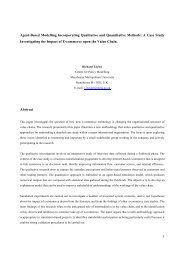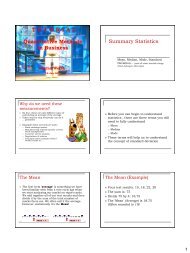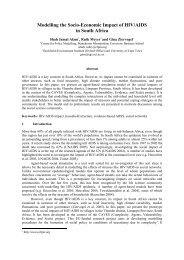7 Chapter 2 Literature Review: Markets, Intermediation and E ...
7 Chapter 2 Literature Review: Markets, Intermediation and E ...
7 Chapter 2 Literature Review: Markets, Intermediation and E ...
Create successful ePaper yourself
Turn your PDF publications into a flip-book with our unique Google optimized e-Paper software.
2.2 Drawing Parallels with Todays Economic Development<br />
The parallels of the historical period 1830-1900 with today’s economy are the rapid<br />
development <strong>and</strong> diffusion of new information <strong>and</strong> communication technologies<br />
(ICT), the opening up of markets to wider competition, new opportunities for<br />
intermediation, <strong>and</strong> the creation of new sales channels. Much current e-commerce<br />
research ignores these parallels by taking a short-term view of technological change.<br />
This section tries to redress this shortcoming by placing these new developments in<br />
the light of the above established literature. It will be argued that although modern<br />
ICT development has had far-reaching <strong>and</strong> unpredictable ramifications, similar<br />
patterns can be found from the analysis of the previous two sections, <strong>and</strong> that these<br />
similarities are informative of a broader perspective of economic change.<br />
In recent times with the development of ICT we have seen increasingly fast <strong>and</strong><br />
ubiquitous networks through which all types of digital information flow. This<br />
technology enables teleworking, the convenience of digital information storage <strong>and</strong><br />
retrieval, <strong>and</strong> increasing automation of repetitive work, among other benefits. Many<br />
improvements have been possible thanks to the rapid communication of up-to-date<br />
<strong>and</strong> accurate information. In business terms, this allows not only a better customer<br />
service, but also greater internal efficiencies, brought about by improvements in<br />
inventory management, reduced product cycle times, etc. As an example of the impact<br />
of new ICT, Electronic Data Interchange (EDI) is examined in section 2.4.<br />
As discussed in the previous section, researchers, economists <strong>and</strong> historians<br />
examining market <strong>and</strong> organisational structure, have given their attention to key<br />
issues about the conflict between competitive <strong>and</strong> cooperative relations in markets,<br />
<strong>and</strong> about how best to balance between markets <strong>and</strong> hierarchies as alternative ways to<br />
organise production <strong>and</strong> distribution. <strong>Markets</strong> have the advantage of flexibility in that<br />
activities which become unproductive or unnecessary can be easily exchanged, <strong>and</strong><br />
that elements have a better opportunity to excel in their specific roles. However,<br />
market mechanisms do not usually produce good information flow. Integration via<br />
hierarchies has the advantage of improving coordination <strong>and</strong> control between the<br />
13


